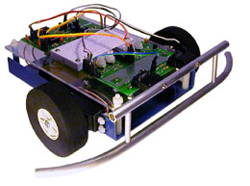Retro Joystick Control
Suppose you have an old joystick that you want to use to control your latest micro-controller project. These joysticks use a DB-15 connector with a readily available pinout. A Game Port style joystick consists of digital buttons, and analog axes. In this post, I will go over how to optimally interface the axes of these types of joysticks with your microcontroller.
Inside of the joystick, mounted at right angles are potentiometers, one for each axis:
Read more...